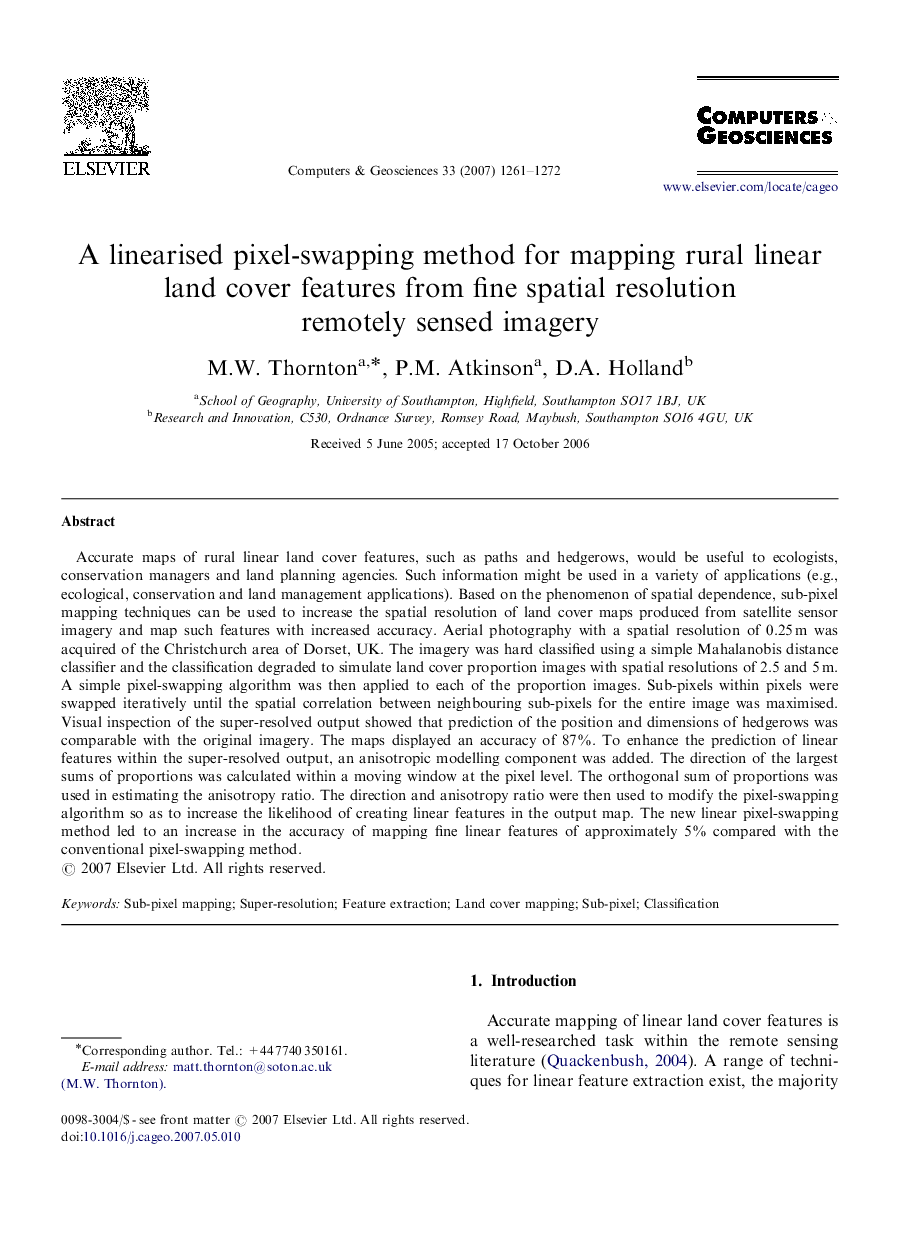| Article ID | Journal | Published Year | Pages | File Type |
|---|---|---|---|---|
| 10352587 | Computers & Geosciences | 2007 | 12 Pages |
Abstract
Accurate maps of rural linear land cover features, such as paths and hedgerows, would be useful to ecologists, conservation managers and land planning agencies. Such information might be used in a variety of applications (e.g., ecological, conservation and land management applications). Based on the phenomenon of spatial dependence, sub-pixel mapping techniques can be used to increase the spatial resolution of land cover maps produced from satellite sensor imagery and map such features with increased accuracy. Aerial photography with a spatial resolution of 0.25Â m was acquired of the Christchurch area of Dorset, UK. The imagery was hard classified using a simple Mahalanobis distance classifier and the classification degraded to simulate land cover proportion images with spatial resolutions of 2.5 and 5Â m. A simple pixel-swapping algorithm was then applied to each of the proportion images. Sub-pixels within pixels were swapped iteratively until the spatial correlation between neighbouring sub-pixels for the entire image was maximised. Visual inspection of the super-resolved output showed that prediction of the position and dimensions of hedgerows was comparable with the original imagery. The maps displayed an accuracy of 87%. To enhance the prediction of linear features within the super-resolved output, an anisotropic modelling component was added. The direction of the largest sums of proportions was calculated within a moving window at the pixel level. The orthogonal sum of proportions was used in estimating the anisotropy ratio. The direction and anisotropy ratio were then used to modify the pixel-swapping algorithm so as to increase the likelihood of creating linear features in the output map. The new linear pixel-swapping method led to an increase in the accuracy of mapping fine linear features of approximately 5% compared with the conventional pixel-swapping method.
Keywords
Related Topics
Physical Sciences and Engineering
Computer Science
Computer Science Applications
Authors
M.W. Thornton, P.M. Atkinson, D.A. Holland,
